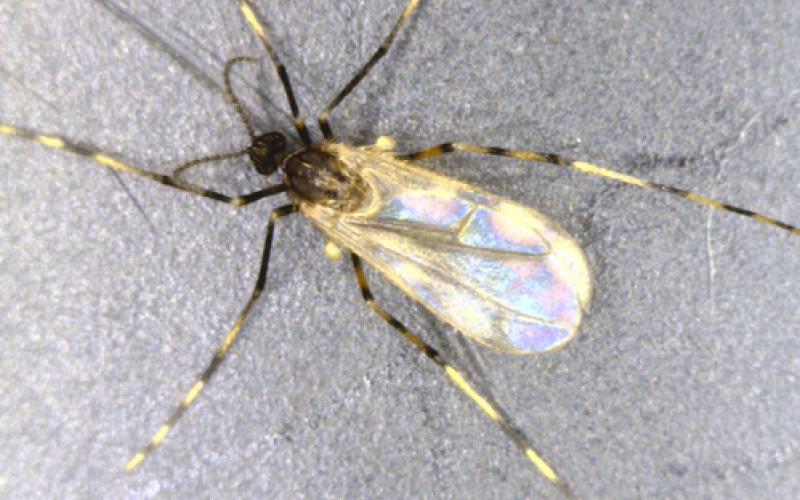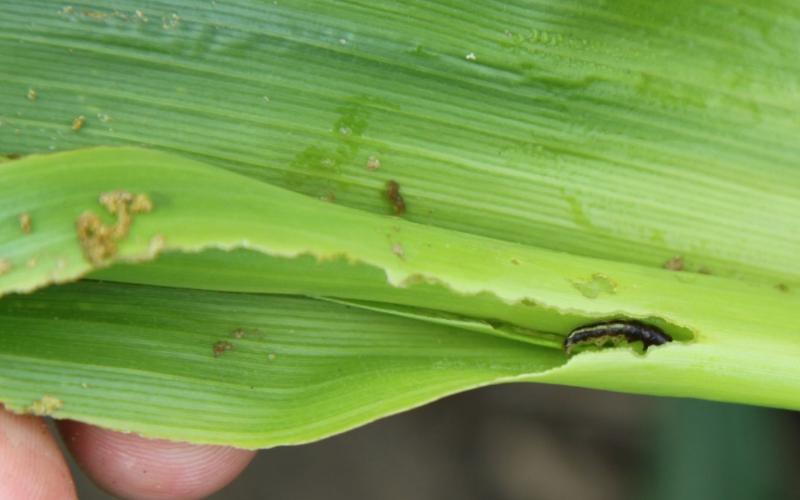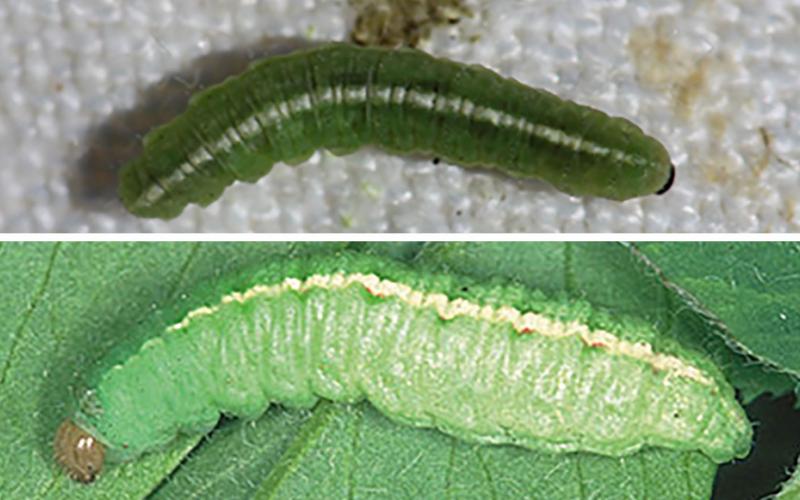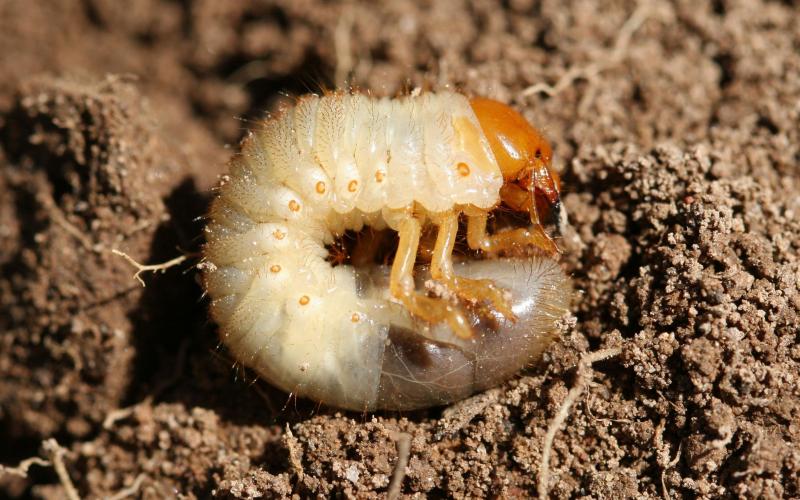Content by Philip Rozeboom

Soybean Gall Midge: It’s a New Species!
Researchers recently determined that the soybean gall midge, discovered in South Dakota in 2015, is actually a previously undocumented species. The origin of the new species, Resseliella maxima Gagné, is still unknown.

Common Stalk Borer Activity Update: May 16, 2019
The hatching and movement of common stalk borer caterpillars can be estimated by using degree days with a developmental threshold of 41 degrees Fahrenheit. Common stalk borer eggs typically begin to hatch at 575 degree days.

How to Identify Common Stalk Borers and Thresholds
As corn is being planted, it is important to remember that there are insect pests capable of injuring young, vegetative corn. One such pest is the common stalk borer. Although common stalk borer outbreaks are sporadic, when present in high numbers they can cause significant yield loss.

Grasshopper Mites in South Dakota
Fact sheet that covers the ectoparasite grasshopper mites.

Soybean Aphids in South Dakota
Factsheet on Soybean Aphids in South Dakota

An identification guide to common Ticks of South Dakota
A guide to identifying common ticks in South Dakota

Protecting Yourself From Ticks
During wet springs, tick populations tend to thrive in South Dakota. These parasitic arthropods require blood to fulfill their nutritional needs and commonly use humans as a host. Some ticks can also carry bacterial diseases that are a threat to human health.

How to Differentiate Alfalfa Weevils From Clover Weevils
When scouting alfalfa, there are two species of weevils that are commonly observed. They are the alfalfa weevil and the clover leaf weevil. Although they are similar in size and coloration, each species has unique characteristics that can be used to identify them.

Monitor Alfalfa for Cutworm Activity
During the spring, there are a lot of insects to scout for in alfalfa. One pest group that should be focused on right now are cutworms. There are a couple of cutworm species that are active earlier in the season than others.

2019 June Beetle Update
In the spring of 2016, we received reports of large populations of June beetles in Central South Dakota, which indicates the start of a new cycle for the grubs. Based on these reports, it is estimated that 2019 will be the big emergence year if the 2016 adults were successful and their grubs survived.